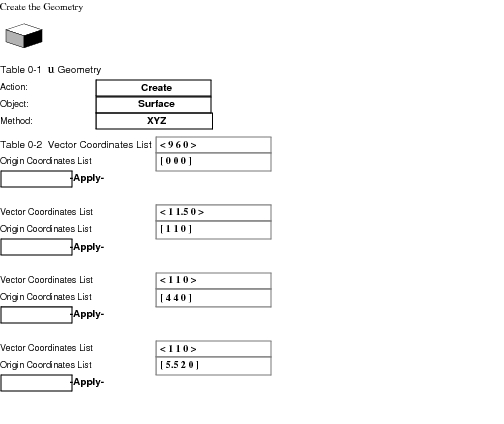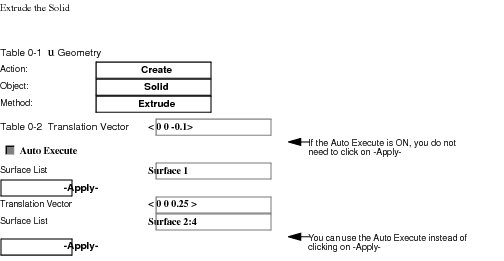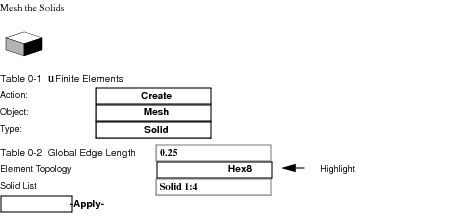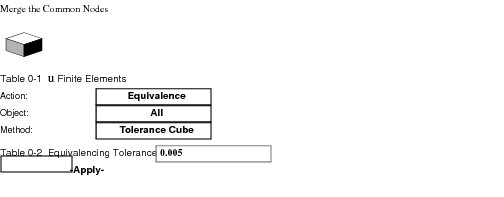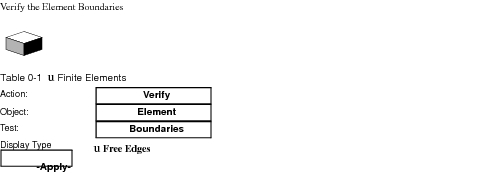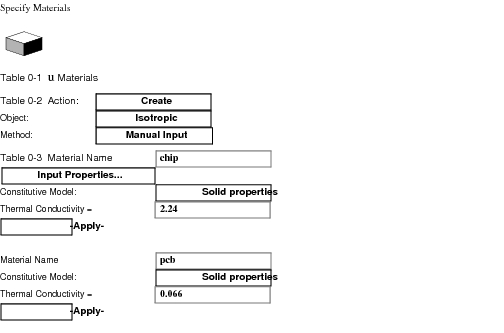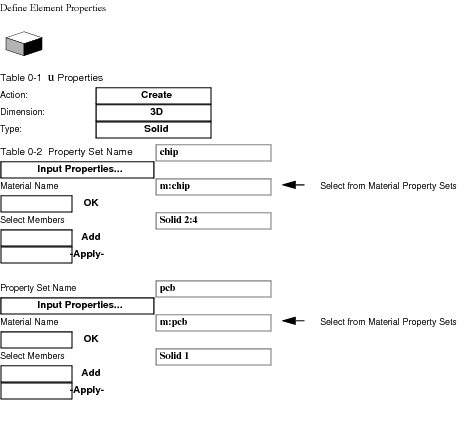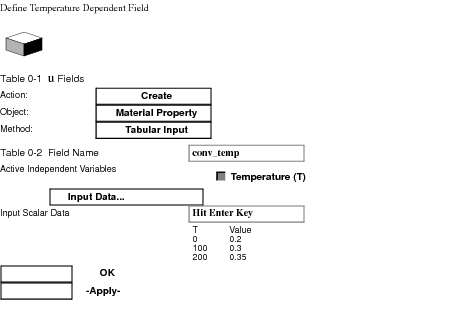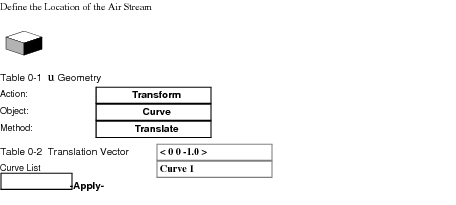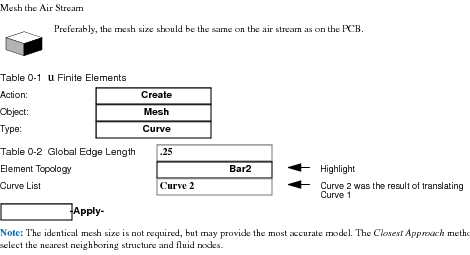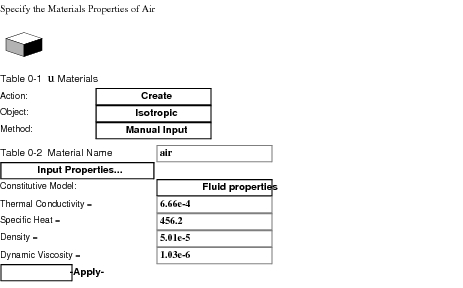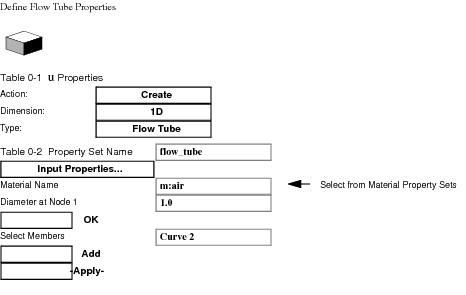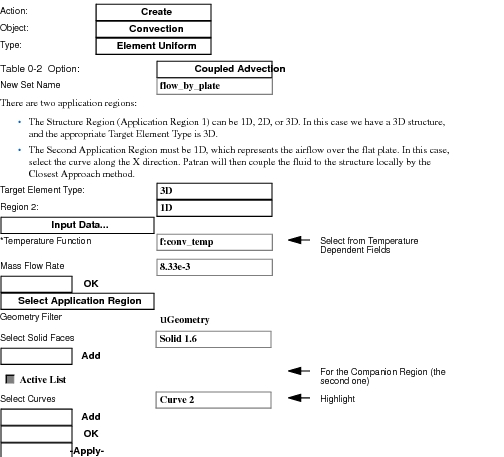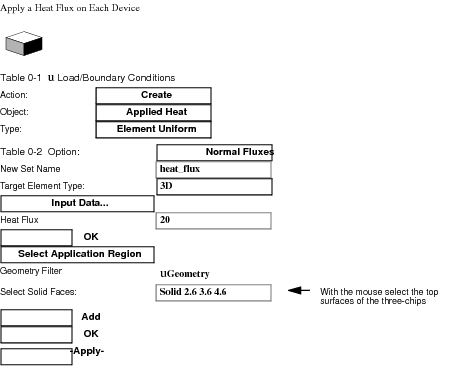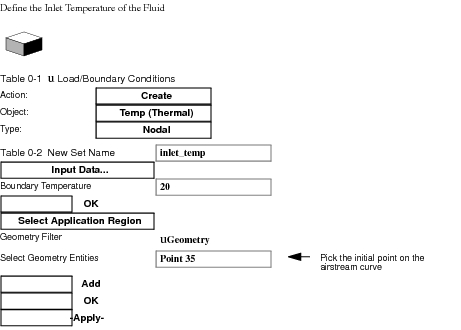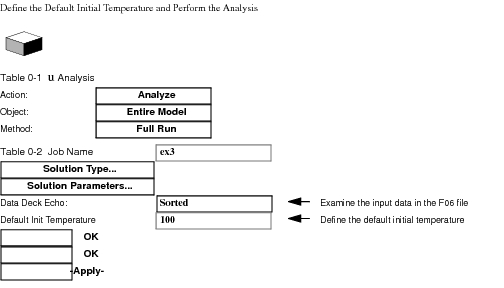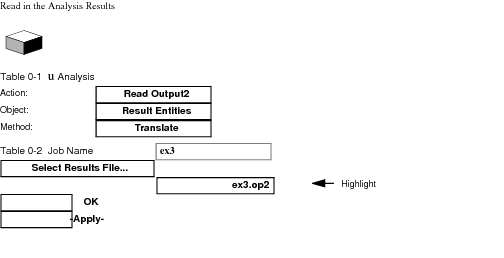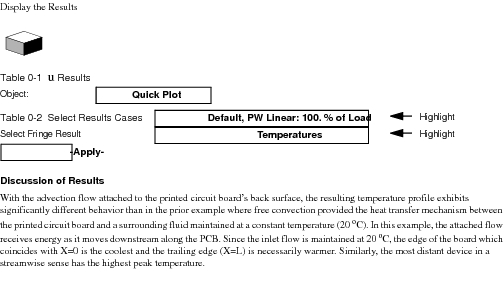XXXXXXXXXXXXXXXXXXXXXXXXXXXXXXXXXXXXXXXXXXXXXXXXXXXXXXXXXXXXXXXXXXXXXXXXXXXXXXXXXXXXXXXXXXXXXXXXXXXXXXXXXXXXXXXXXXXXXXXXXXXXXXXXXXXXXXXXXXXXXXXXXXXXXXXX''"> 7.4 Example 3 - Forced Air Convection on Printed Circuit Board
Problem Description
This is an extension of the previous analysis (Example 2). The geometry is unchanged; however, the applied heat flux is increased to 20.0 W/in2. In place of free convection to an ambient environment, an advective flow will traverse the surface. The coolant stream travels in the X-direction with the inlet located at X=0 and the outlet positioned at X=L=9.0 inches. The mass flow rate is constant at any X location with a value of 0.5 lbm/min (8.33E-03 lbm/sec). The inlet temperature is set at 20 oC.
Associated with the advection flow which transports energy streamwise, is the heat transfer that takes place between the fluid stream and the PCB. In this problem, energy passes from the PCB into the fluid stream. The convection behavior for this transport is specified with a temperature dependent heat transfer coefficient. In the absence of any film node specification, the look up temperature for this heat transfer coefficient defaults to the average temperature between the PCB surface element and its ambient points, in this case, the nodal points in the advected fluid stream.
Modeling
We will model the previous PCB thermal analysis with forced air convection over the flat plate, using the Coupled Advection feature. The air temperature rises in the X direction as the fluid stream traverses the circuit board. The temperature dependency of the convection coefficient will be defined using a temperature dependent field.


